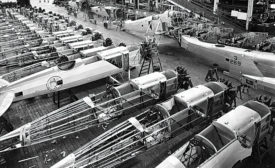Robotics Assembly
Additive Manufacturing and End Of Arm Tooling
Innovative 3D-printed end-of-arm tooling enables systems integrator to lighten the load on a robotic packaging line.
July 1, 2016
Never miss the latest news and trends driving the manufacturing industry
Stay in the know on the latest assembly trends.
JOIN TODAY!Copyright ©2024. All Rights Reserved BNP Media.
Design, CMS, Hosting & Web Development :: ePublishing








